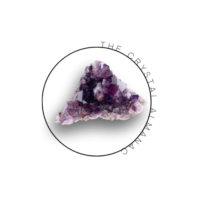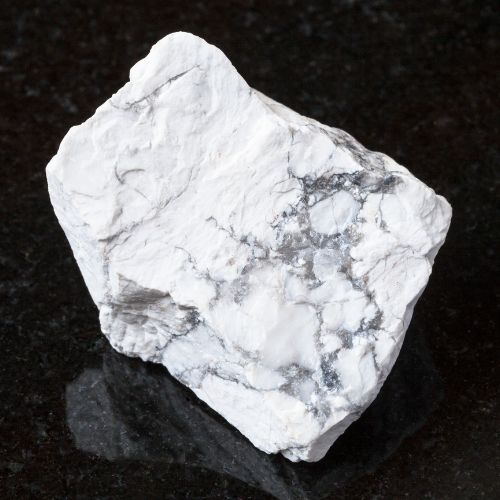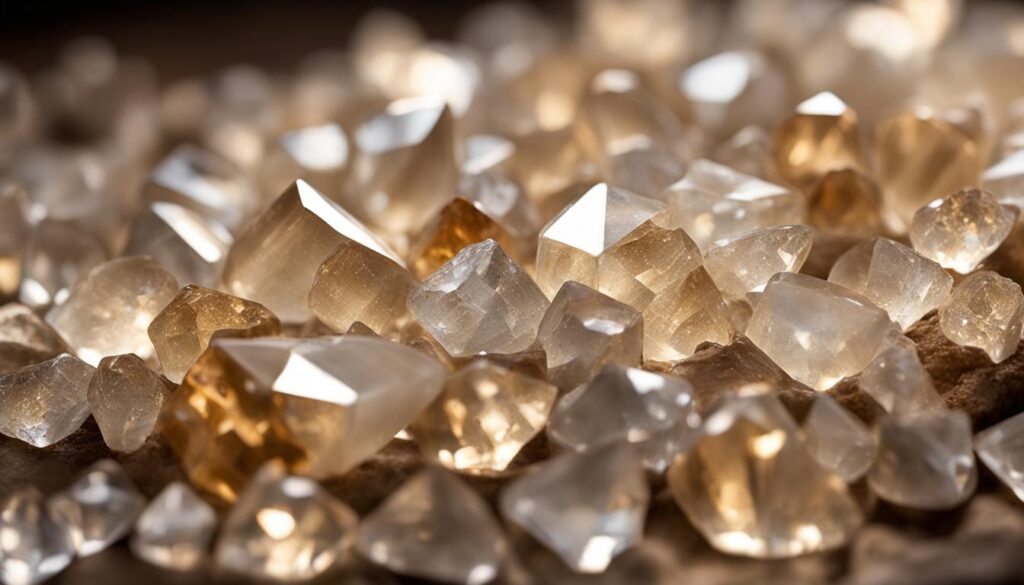Labradorite is a mystical gemstone with deep-rooted meaning and powerful healing properties. It is named after Labrador, a Canadian province where it was first found. In Inuit legend, labradorite is believed to have been created when a warrior freed the Northern Lights trapped in rocks by striking them with his spear. Labradorite is highly regarded for its spiritual significance and is known for its ability to protect the aura and ward off negativity. It is also associated with transformation and inner strength. Labradorite is commonly used in jewelry, but it has also been utilized in the production of glass, road construction, and ceramic manufacturing.

Key Takeaways:
- Labradorite is a mystical gemstone with powerful healing properties.
- It is named after Labrador, a Canadian province where it was first found.
- In Inuit legend, labradorite is believed to have been created when a warrior freed the Northern Lights trapped in rocks.
- Labradorite protects the aura and wards off negativity.
- It is associated with transformation and inner strength.
The History and Legend of Labradorite
Labradorite has a rich history and a fascinating legend attached to it. The stone was first described by Moravian missionaries in the late eighteenth century when they introduced it into the European market. Labradorite quickly gained popularity for its beauty and unique color-changing phenomenon, known as labradorescence, which adds to its allure and sense of mysticism.
According to Inuit legend, labradorite is believed to possess magical properties and is associated with the Northern Lights. The stone’s name itself is derived from Labrador, a Canadian province where it was first found. In Inuit folklore, labradorite is said to have been created when a warrior freed the Northern Lights trapped in rocks by striking them with his spear. This connection to the aurora borealis gives labradorite a special significance and symbolism.
Throughout history, labradorite has been revered for its spiritual and protective qualities. People believe that wearing labradorite can bring light and protection to the wearer, shielding the aura from negative influences. The stone’s connection to the Northern Lights is also thought to enhance spiritual awareness and intuition, making it a powerful tool for meditation and connecting with higher consciousness.
Metaphysical Properties of Labradorite
Labradorite is a mystical gemstone that possesses a wide range of metaphysical properties. Its unique energy is highly regarded for its ability to enhance spiritual awareness and intuition. When used in meditation, labradorite can deepen spiritual experiences and expand one’s connection with the spiritual realm.
This beautiful stone is said to stimulate the throat chakra, promoting clear communication and self-expression. It allows individuals to express their thoughts and emotions with clarity and authenticity. Labradorite also activates the third eye chakra, facilitating access to higher consciousness and intuitive abilities.
One of the most notable metaphysical properties of labradorite is its powerful protective energy. This stone acts as a shield against negative energies, helping to safeguard the aura and maintain its integrity. It also promotes a sense of grounding, allowing individuals to stay centered and balanced even in challenging situations.
Key Metaphysical Properties of Labradorite:
- Spiritual awareness and intuition enhancement
- Stimulation of the throat and third eye chakras
- Protection against negative energies
- Grounding and balance
Labradorite’s metaphysical properties make it a valuable stone for those seeking spiritual growth, clarity, and protection.
Healing Properties of Labradorite
Labradorite is renowned for its exceptional healing properties, making it a sought-after gemstone in the world of crystal healing. This mesmerizing stone is believed to have a profound effect on both the physical and emotional well-being of individuals who work with it.
1. Emotional Healing
Labradorite is known for its ability to alleviate anxiety and depression, promoting a sense of emotional well-being and inner peace. This stone is said to have a calming effect on the mind, helping to reduce stress and anxiety. By working with labradorite, individuals may experience a boost in self-confidence and a greater sense of self-worth.
2. Physical Healing
Labradorite is believed to offer numerous physical healing benefits. It is said to boost the immune system, helping to ward off illnesses and infections. This stone is also known to improve respiratory health, making it beneficial for individuals dealing with respiratory conditions such as asthma or allergies. Additionally, labradorite is believed to aid in digestion, promoting a healthy gut and overall digestive system.
3. Spiritual Healing
Labradorite is widely recognized for its spiritual healing properties. It is considered a powerful stone for enhancing spiritual awareness and intuition. This gemstone is believed to stimulate the throat chakra, allowing for clear communication and self-expression. Labradorite is also associated with the third eye chakra, enabling individuals to tap into their higher consciousness and connect with the spiritual realm. By working with labradorite during meditation, individuals may experience deeper spiritual experiences and enhanced psychic abilities.
Whether you are seeking emotional healing, physical well-being, or spiritual growth, labradorite is a powerful tool that can assist you on your journey. By harnessing the unique energies of this captivating gemstone, you can unlock its healing potential and experience the transformative power it holds.
Using Labradorite in Jewelry and Design
Labradorite is a popular gemstone choice for designers and jewelry enthusiasts alike. Its captivating appearance and unique color-changing effect make it a prized gem in the world of jewelry and design. Whether used in necklaces, earrings, or bracelets, labradorite adds a touch of mystique and elegance to any piece.
Designers often incorporate labradorite’s flashes of color into their creations to make them truly stand out. The gemstone’s versatility allows it to be paired with various metal tones, such as sterling silver or antiqued silver, making it adaptable to different design styles.
One of the popular ways to showcase labradorite is by using cabochons in open-back settings. This design choice allows light to pass through the stone, enhancing its brilliance and maximizing its color-changing effect. The result is a piece of jewelry that captures attention and sparks conversation.
Why Choose Labradorite Jewelry?
- Labradorite’s color-changing phenomenon, known as labradorescence, creates a mesmerizing visual display.
- The gemstone is associated with spiritual properties, such as enhancing intuition and promoting a sense of grounding.
- Labradorite jewelry adds a touch of elegance and uniqueness to any outfit.
- It makes for a thoughtful and meaningful gift for loved ones, symbolizing transformation and personal growth.
Whether you’re a jewelry enthusiast or a designer looking to create captivating pieces, labradorite is a gemstone that offers endless possibilities. Its beauty, metaphysical properties, and versatility make it a gem worth exploring, both for personal adornment and design inspiration.
Caring for Labradorite
Labradorite is a mesmerizing gemstone that requires proper care to preserve its natural beauty and energetic properties. To keep your labradorite jewelry and designs looking their best, follow these simple care instructions:
Cleaning Labradorite
To clean your labradorite, gently wash it with mild soap and warm water using a soft, untreated cloth. Avoid using harsh chemicals or abrasive cleaners, as they can damage the stone’s delicate surface. After cleaning, rinse the labradorite thoroughly and pat it dry with a clean cloth.
It’s important to note that labradorite should never be cleaned using ultrasonic cleaners, steam, or boiling methods, as these can cause fractures or discoloration. Stick to the gentle soap and water method to ensure the longevity of your labradorite’s vibrant colors.
Storing Labradorite
When not wearing your labradorite jewelry, store it in a soft cloth or a padded jewelry box to protect it from scratches and potential damage. Avoid storing labradorite with other gemstones or jewelry pieces to prevent any accidental collisions that may result in chips or cracks.
Handling Labradorite
Labradorite is a relatively fragile stone, so it’s important to handle it with care. Avoid exposing labradorite to direct blows, excessive pressure, or sudden temperature changes, as these can cause the stone to crack or break. When wearing labradorite jewelry, take care to avoid rough activities or situations where the stone may come into contact with hard surfaces.
By following these simple care instructions, you can ensure that your labradorite remains vibrant and radiant for years to come, allowing you to enjoy its mystical beauty and healing properties to the fullest.
FAQ
What is the meaning of Labradorite?
Labradorite is a mystical gemstone with deep-rooted meaning and powerful healing properties.
Where did Labradorite get its name?
Labradorite is named after Labrador, a Canadian province where it was first found.
What is the legend associated with Labradorite?
In Inuit legend, Labradorite is believed to have been created when a warrior freed the Northern Lights trapped in rocks by striking them with his spear.
What are the spiritual properties of Labradorite?
Labradorite is highly regarded for its spiritual significance and is known for its ability to protect the aura and ward off negativity. It is also associated with transformation and inner strength.
How is Labradorite used in jewelry and design?
Labradorite is commonly used in the creation of necklaces, earrings, and bracelets. Designers often incorporate its unique color-changing effect to create pieces that stand out.
How should I care for Labradorite?
It is recommended to clean labradorite using gentle soap and water with an untreated cloth. Avoid using ultrasonic cleaners, steam, or boiling methods, as they may damage the stone.


